Hydrangeas are a diverse group of flowering plants that could actually be considered shrubs. Different Type of hydrangea Although that may not be the most wonderful description, these plants are absolutely amazing in looks, and they come in a wide variety of colors, sizes, shapes, and textures.
They are native to Asia and the Americas, but over time and with human expansion, these bushes have made their way over to Europe, where European people’s and monarchs took a great liking to them.
In fact, it has been suggested that the Ancient Greeks introduced them to their northern neighbors, and the fascination with this plant has continued since then.
Many cultures look to Hydrangeas for not only its tea producing qualities, but also as a symbol of springtime.
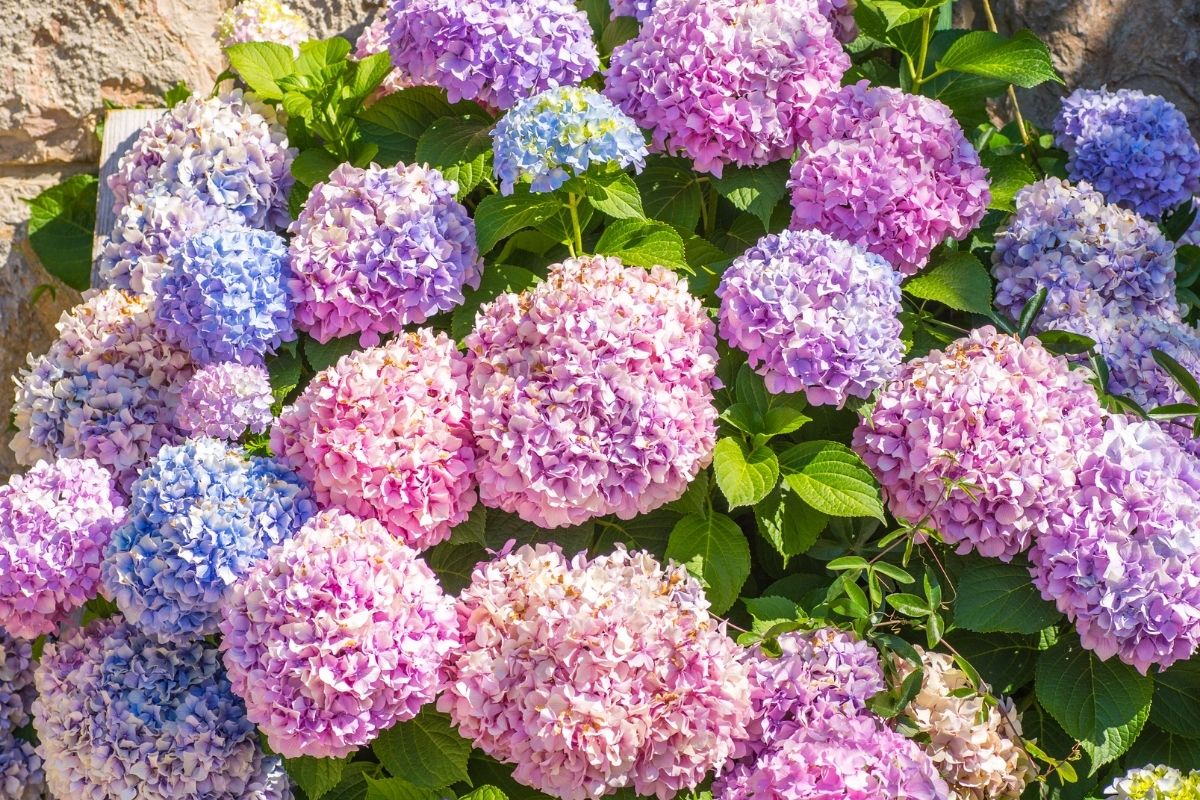
They often appear just as spring does, and the bees absolutely love to visit the plants, then when the autumn is starting to set in they wilt and go dormant in preparation for winter.
With this in mind, it is a good idea to discuss Hydrangeas in more detail. As such, here is a list of the different types of Hydrangeas in the world today and what sets them apart from each other.
The Different Types Of Hydrangea
Due to the sheer amount of different varieties of Hydrangea there are in the world today, we weren’t able to place every single one on this list.
There are over 75 different types of Hydrangea in the world, and it would be impossible to highlight them all.
Therefore, we have decided to list the most popular or the most sort after Hydrangeas by gardeners the world over, so you can see what people look for in different Hydrangeas and the various kinds that are on offer to us as gardeners.
1. Bigleaf Hydrangea
The Bigleaf Hydrangeas are the most common and popular of the Hydrangeas.
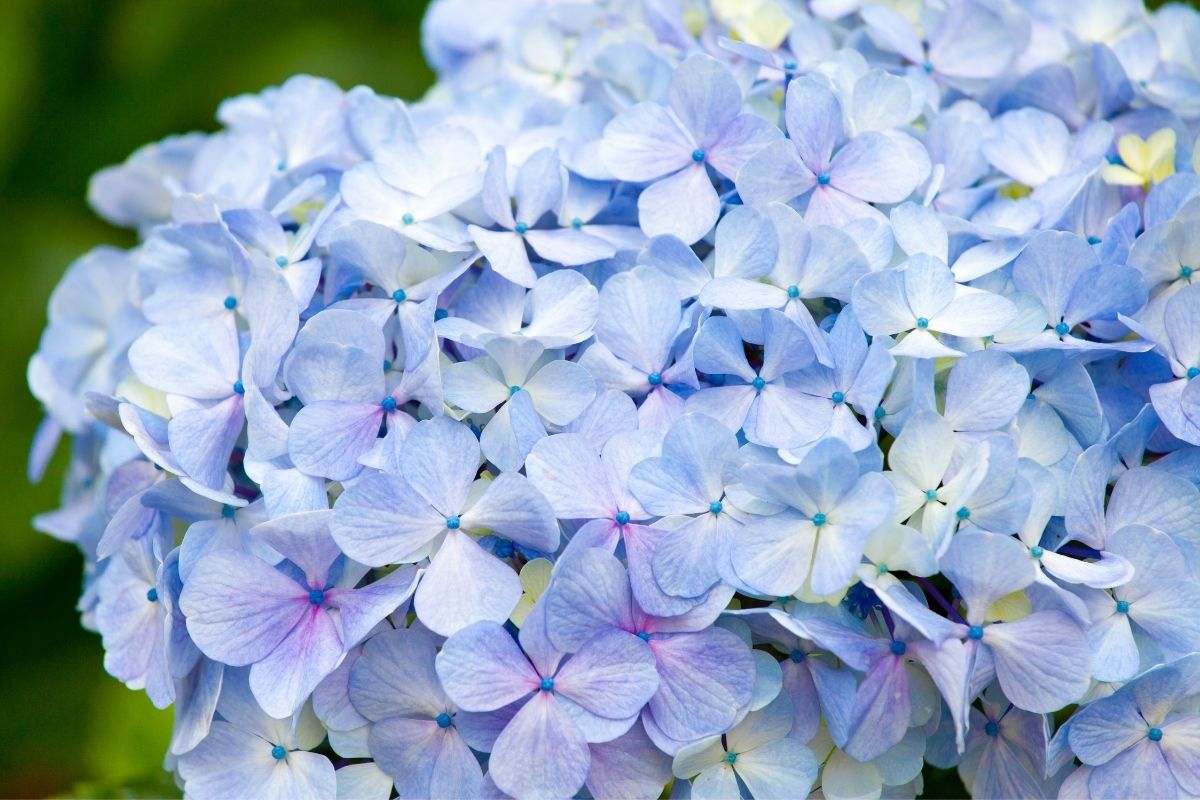
It is originally native only to the main island of Japan, Honshu, but over time it has become naturalized in other countries and regions, such as China, the Americas, and even New Zealand.
The species that belong to this category is beautiful, but it is also very persistent and has become invasive on small island chains, like the Azores islands.
Bigleaf Hydrangeas come in a variety of colors, but the most common include blue, pink, red, light purple, and dark purple.
What makes them interesting is that the color of the flowers of this Hydrangea variety entirely depends on the soil pH level.
A more acidic soil will cause the flowers to be bluer, while a more alkaline soil will cause the flowers to be pinker.
It is a useful way to measure your soil’s pH without equipment in preparation for other flowers.
As expected from a plant named ‘Bigleaf’, the difference between this group of Hydrangeas and others is the size of their leaves.
They are hardy, heart shaped, and can grow to be 6 inches long and 5 inches wide, they would overshadow their blooms quite significantly if not for the beauty of them.
2. Mophead Hydrangeas
Of the most common group of Hydrangeas comes the most common variety, the Mophead Hydrangea.
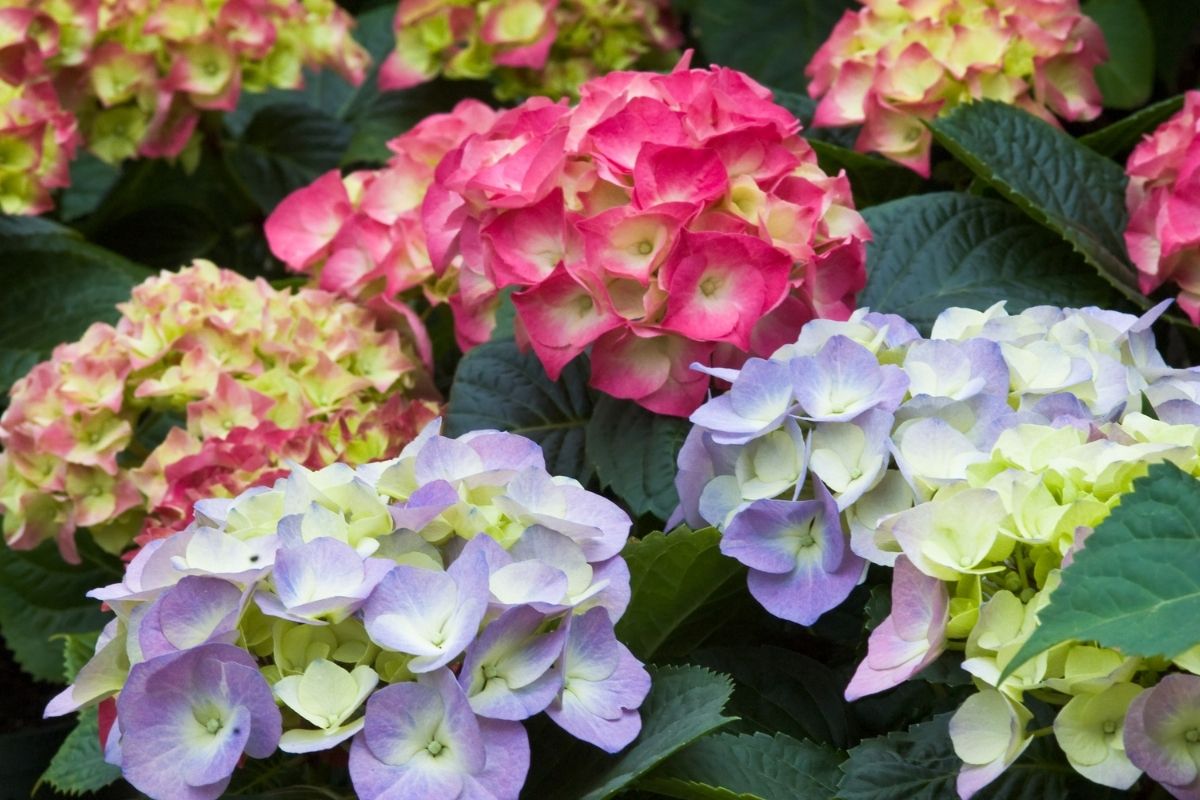
These Hydrangeas bloom with a large collection of small flowers in one tight-knit ball. They tend to grow in such a way that the bloom looks puffy and much like a pom pom from a distance.
The issue with Mopheads is that they can be sensitive to colder climates and tend to suffer in areas where the weather drops below freezing or is subject to intense or protracted periods of cold rainfall.
3. Lacecap Hydrangeas
The shrubs of Lacecap Hydrangeas are practically identical to Mopheads, down to the height, size, and leaves. Yet, there is one area that shows a distinct and crucial difference.
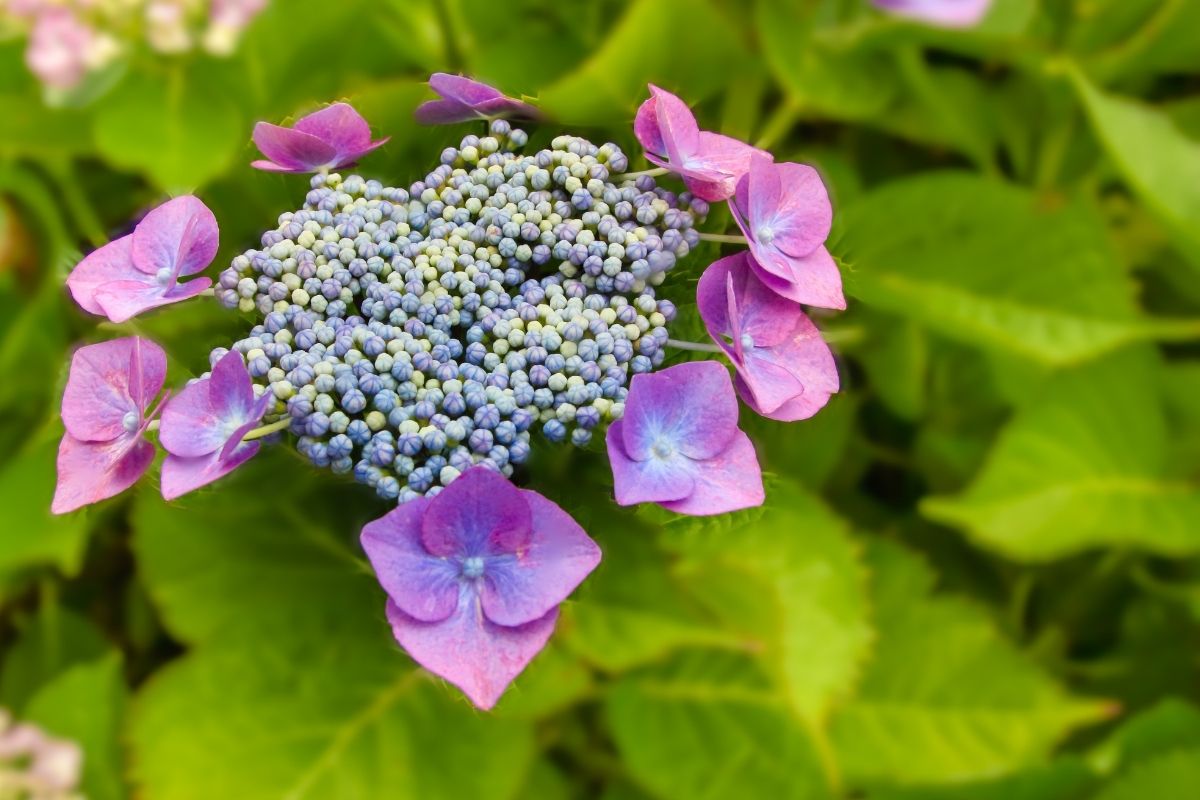
This area is the flowers and blooms themselves, for they look absolutely nothing like the Mopheads at all.
For starters, the Lacecap blooms spread out significantly. Around the outside of the bloom, there are numerous beautiful flowers.
Each of these flowers has four petals, and they spread in opposite directions, while being open and incredibly flat.
In the center of the bloom, there are tiny flowers about 20 times smaller than the outer flowers.
This isn’t just a strange feature of this plant, but an actual germination tactic. The outer flowers are completely sterile and offer no pollen or nectar, but they are very attractive to insect pollinators.
Once a pollinator sees these flowers, they come to the Hydrangea and, finding nothing on the sterile flowers, they make their way to the center of the bloom. They find pollen and the plant germinates. Everybody wins.
3. Mountain Hydrangea
The last of the Bigleaf Hydrangeas and by far the least common, the Mountain Hydrangea closely resembles the Lacecap, down to the flowers, but there are key differences between the two.
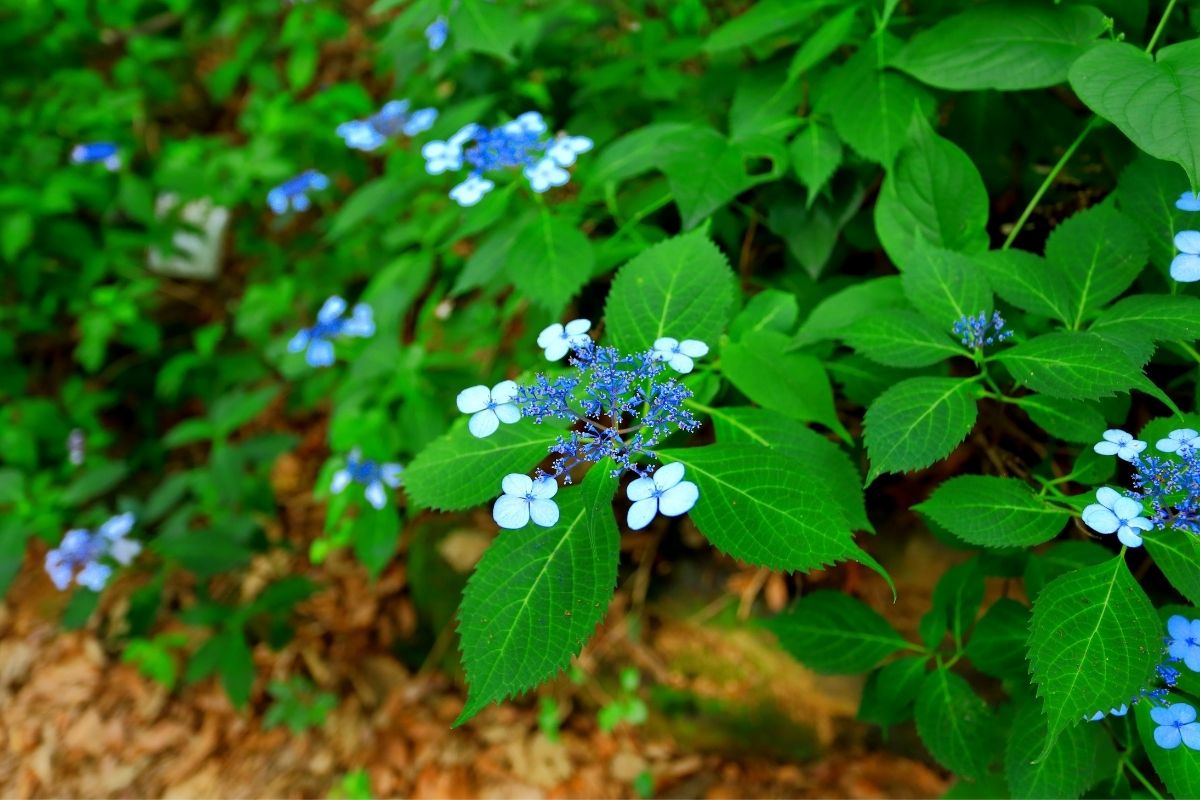
While the mountain Hydrangea has sterile outer leaves and pollinating inner leaves, like the Lacecap, they are much smaller in size with much flatter petals.
The inner flowers also have tiny tubular petals sticking out of them as well at about 1 to 2 inches, which the Lacecap doesn’t have. The reasons for these differences are the areas in which these plants live.
Being from mountainous regions, they used to a colder climate and so have adapted to have smaller petals and give pollinators clear guidance on where the pollen and nectar is.
4. Smooth Hydrangea
To many Americans, the Smooth Hydrangea would simply be called the Wild Hydrangea, as it is native to the dear old United States. These types of Hydrangea are quite different from their Bigleaf cousins.
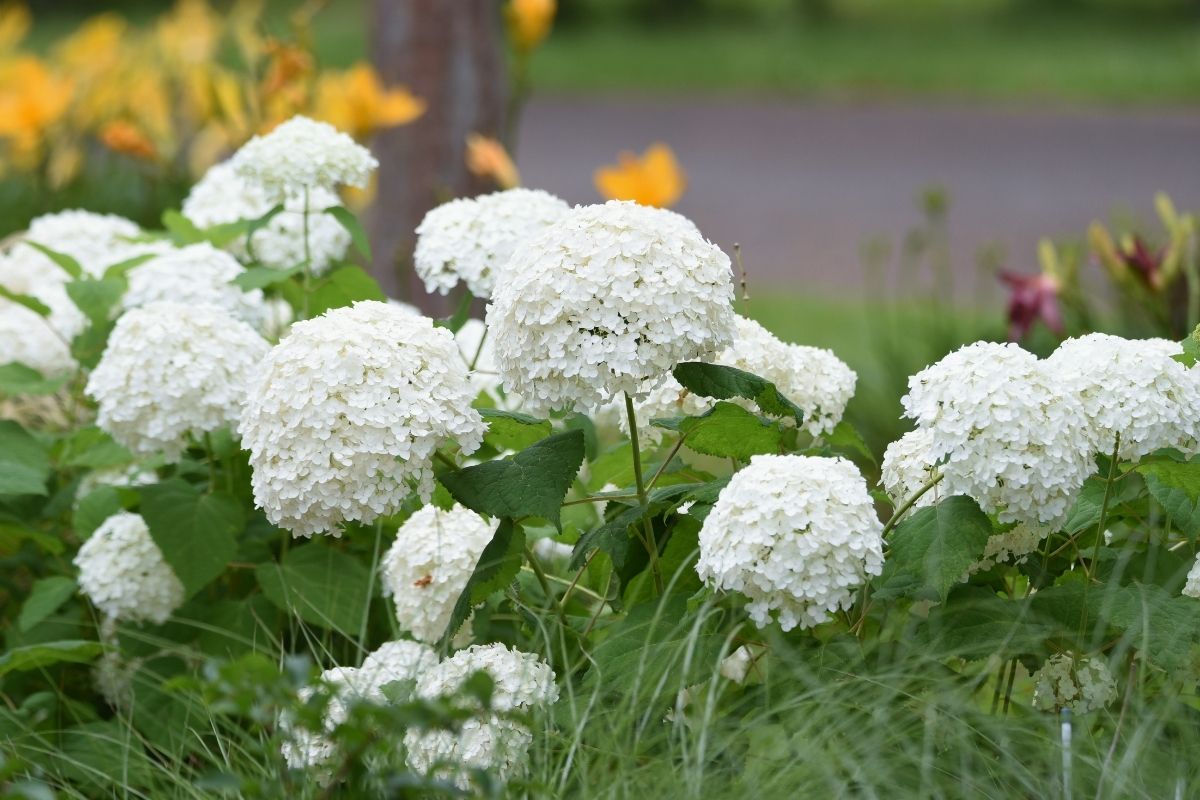
For starters, they can get much taller. Smooth Hydrangeas, on average, grow to about 6 feet tall and go beyond that as well.
While their leaves can be long, they are not particularly wide and tend to droop more than other Hydrangeas due to their height.
Another thing to note is that the blooms of this Hydrangea do not have the sterile, show flowers on the outside of the bloom, or, if they do, they are only about a centimeter in diameter, far smaller than they have to be.
The blooms are normally white or cream-colored, and the flowers on them are often half the size of those found in other varieties.
When they bloom, this variety of Hydrangea forms a fluffy ball shape, similar to the Mophead, except with the color they are said to look a lot like snowballs.
The tightness of the ball also makes them appear as one flower from a few feet away, rather than the multitude they are.
5. Panicle Hydrangea
Native to areas in Japan, Korea, China, and the Sakhalin Islands of Russia, the Panicle Hydrangea are called such because of the vast blooms they produce known as Panicles.
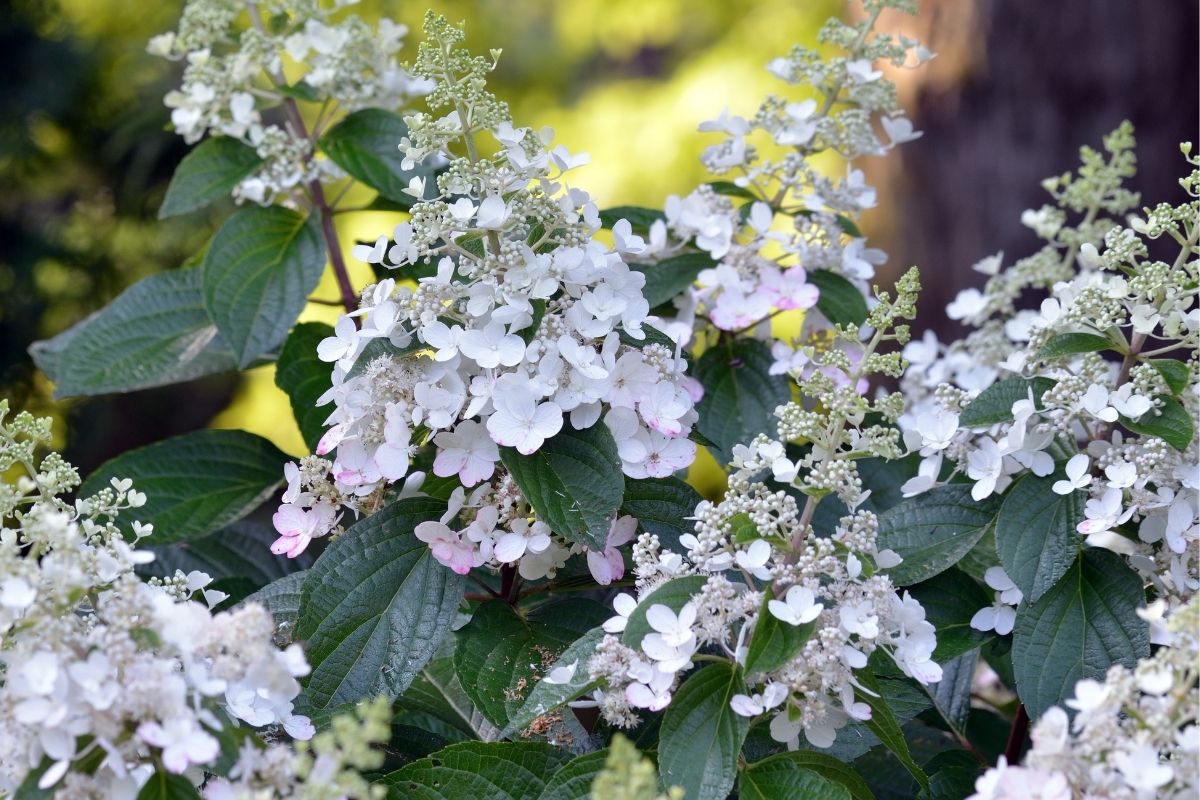
These plants are huge, even by Hydrangea standards, and the shrubs can reach up to 25 feet in height, 4 to 5 times the height of the average human.
The panicles of the plants grow to be very long, and the flowering blooms of these panicles can reach up to 18 inches long.
This means that, when they are flowering, the Panicle Hydrangeas appear as little more than a giant flower bloom, with the main shrub covered in them.
The colors of the flowers do not range, like the Bigleaf varieties, instead they start off as white when they are starting to bloom before turning pink when they fully bloom.
The flowers can last well into the autumn months and the plants are fairly easy to take care of, however you must be wary of the size of these plants before buying them.
They could easily swallow up your whole garden, and there isn’t much you can do to stop them.
6. Oakleaf Hydrangea
Moving back to the United States now, we look at a southeastern variety of plant that exists from the Carolina’s in the north to Louisiana in the south and anywhere in between.
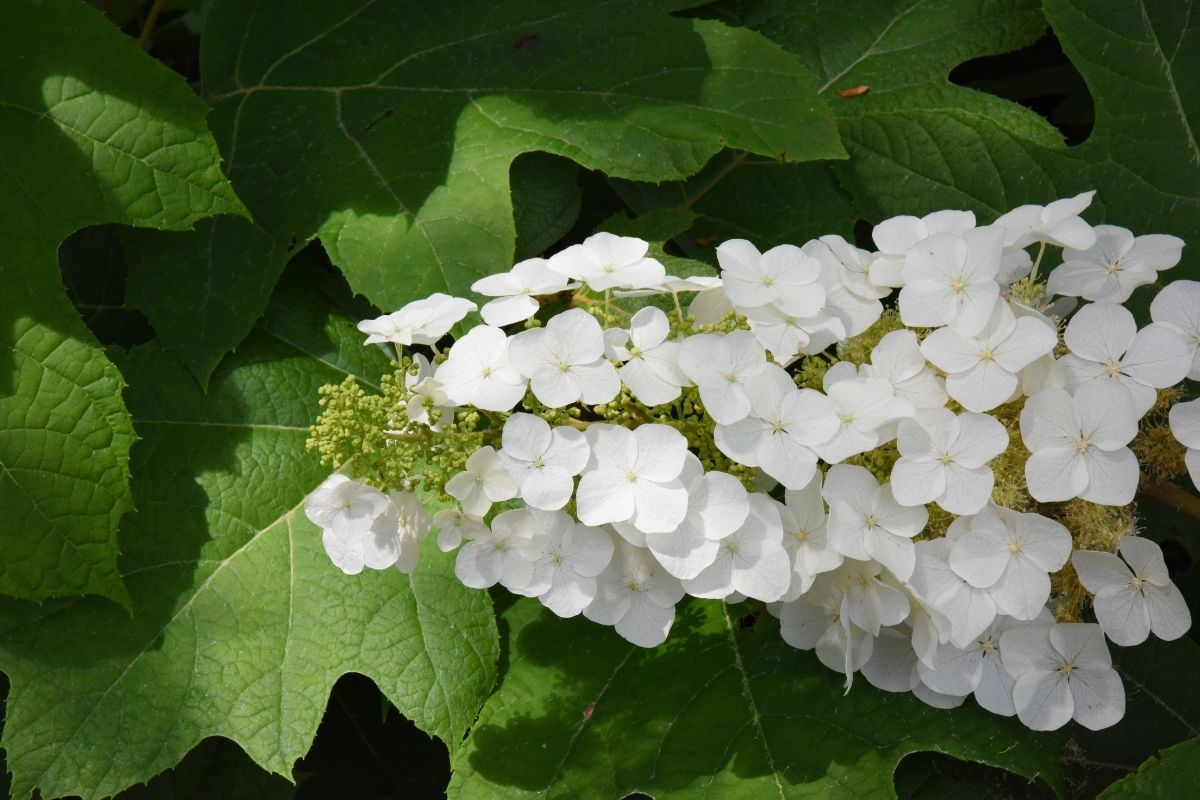
This type of Hydrangea does not get as big as the enormous Panicle Hydrangeas, but it is still pretty large for a bush. At its maximum height, it can reach up to 12 feet tall, which is still quite a height.
The reason for the name is that this Hydrangea produces leaves that have clear lobes and points along the leaf, very similar to what you see on an oak leaf.
The difference is that while oak leaves are more rounded along their points, this Hydrangea’s leaves are more ragged and sharper along the points.
The blooms of this Hydrangea are one of the most beautiful in our opinion. While other Hydrangeas have an explosion of color and shapes in their blooms, the Oakleaf is much more delicate and elegant.
The outer flowers are pure white, very small, and, while the petals are separate, they are so perfectly aligned with one another that they look like one petal.
These petals also form a little bowl shape that reminds us of a fairy’s teacup from childhood myths.
The inner flowers of the Oakleaf Hydrangea are incredibly small, less than a centimeter sometimes, but they are surrounded in a perfect pattern by the outer flowers that it almost looks like a deliberate arrangement, rather than a growing plant.
While not as hardy as Panicle Hydrangeas, they live in areas where other plants would struggle, making them a good fit for any semi-warm garden.
Related: Hydrangea: How To Save Your Gorgeous Plant From Turning Brown
7. Climbing Hydrangea
The Climbing Hydrangea is an interesting plant for two reasons.
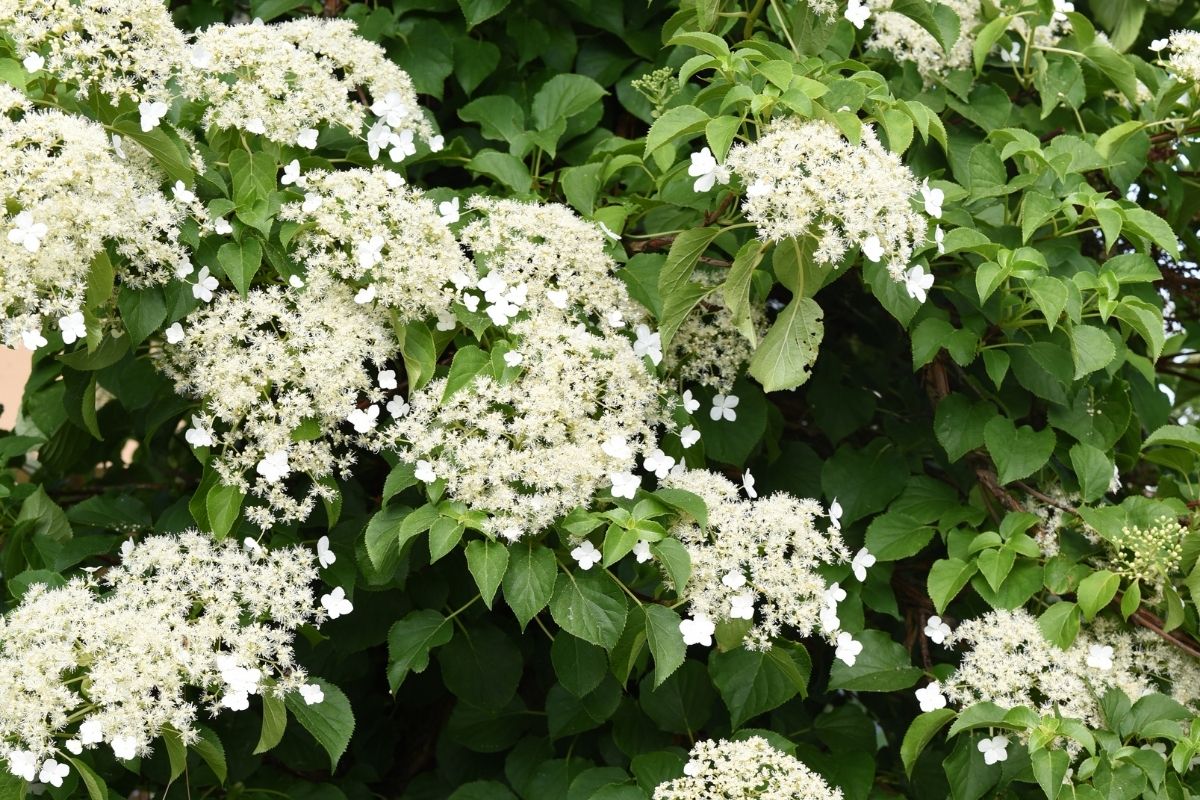
The first is that there are two different species that we call Climbing Hydrangea, although one could be a subspecies of the other it is still odd that we have no distinction in colloquial terminology.
The second is that they do not act like any other Hydrangea, instead they act and are, for all intents and purposes, a vine.
Both species are from Asia, with one being native to southern and central China as well as northern Myanmar and the other being native to Korea, Japan, and eastern Siberia.
However, today we will be talking about the most sought after version of these two plants, which is the first one in this paragraph: Hydrangea Anomala.
Before we talk about the plant itself, it is important to note that if you are an inexperienced gardener or do not have enough time to manage your garden as much as it needs, do not get this Hydrangea.
It is beautiful, yes, it is stunning, yes, but it could also ruin your house and garden. These plants can get up to 80 feet long and can sink their roots into almost anything.
In their native lands, they are known for climbing far up walls and other structures, while being incredibly difficult to remove. So, here is our warning for you.
Moving on, these Hydrangeas have absolutely beautiful flowers, with the outer flowers on long, thin stems with outer petals that are reminiscent of wings, making them look like a butterfly in flight.
The inner flowers stretch their incredibly thin petals in all directions, and from a distance they could be mistaken for lace draped over the plant itself.
While they have white flowers on the outside of the bloom, the inner petals are very light pink, with the contrast between the white and pink flower colors being amazing to see.
One other thing about these Hydrangeas is that they smell wonderful. The fragrance is light, but just enough where the entire vicinity is filled with a pleasant, springtime aroma.
Conclusion
As you can see, the different types of Hydrangeas are almost endless in their appeal and range.
From the popular Bigleaf varieties with Mophead flowers to the huge Panicle Hydrangeas covered head to toe in vibrant pink flower buds, there is literally a shrub for all garden types.
The great thing is that Hydrangeas are fairly easy to take care of as well, even in colder climes you can make accommodations for them.
The only things you need to be wary of are their size and tenacity, as they have both in spades.
You do not want to destroy your garden with huge plants and, likewise, you do not want to destroy a native ecosystem with them either.
Once you have considered these two problems, though, you should be free to plant some beautiful shrubs.







